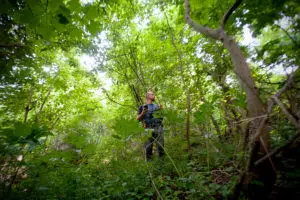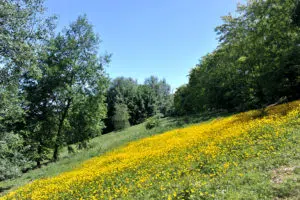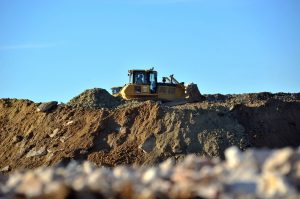Committed to Nature with the OFB
ECT’s development is part of a strategy of circular and local economy. ECT reuses inert soil from construction sites in the Paris region, working with local communities to create green, undeveloped and sustainable landscapes.
Some fifteen ECT projects are currently underway in the Paris region. Every year, they reuse almost 15 million tonnes of excavated soil.
The day-to-day management of these material flows raises questions about sustainable urban planning, urban metabolism, development and regional attractiveness.
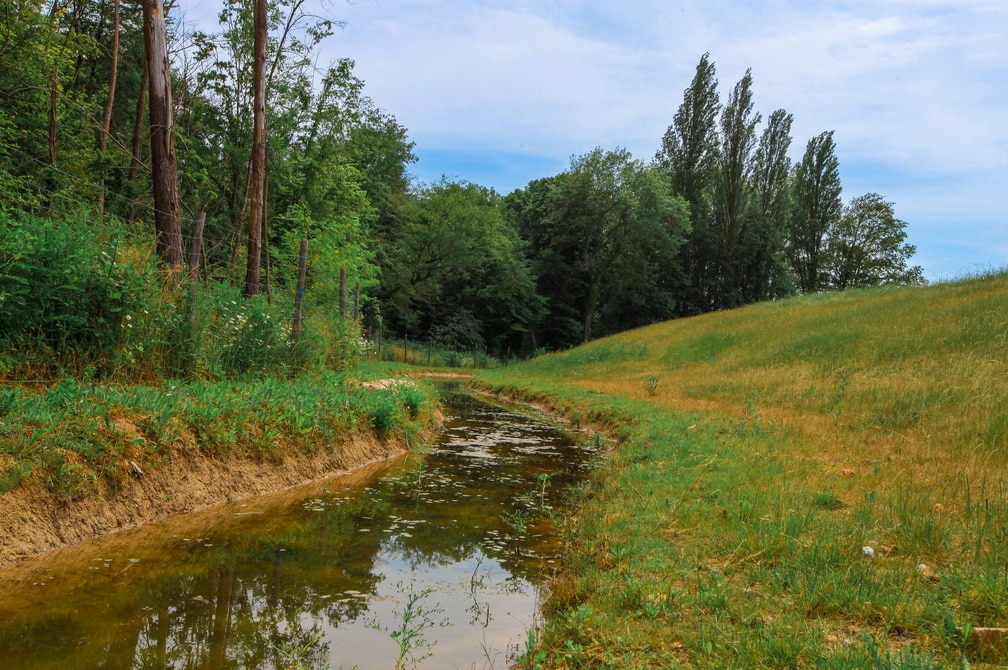
How to draw up an inventory and action plan
The inventory was carried out in accordance with the methodology set out in standard NF X32-001.
A cross-functional working group covering the company’s various business lines (design, operation, development) was set up to :
- produce an inventory of fixtures
- co-construction of issues and objectives
- drawing up an action plan
The plan was validated by all employees, management, relevant stakeholders and local partners.
Ecological landscaping at the ECT site in Roissy-en-Brie (77)
ECT
Scope of the action plan
1
Project design
- Defining of new uses for the site
- Application of the ERC sequence
- Determining biodiversity targets
- Co-construction and consultation with stakeholders (local authorities, buyers/managers, future uses and local associations)
2
Landscaping work
- Excavated soil and earthworks
- Land traceability
- Development of ecological infrastructures,
- Sowing and planting
3
Restitution / transfer for the symbolic euro
- Transmission of a management guide and a simplified management plan for “natural entities”
- In some cases, a long-term agreement is signed. It specifies the ecological objectives and describes the management operations adapted to the ecological requirements of the environments and ecological infrastructures created.
Biodiversity strategy and commitments to Nature
Maintain soil stability, combat erosion of surface horizons, stop rainwater/meteorite run-off.
The aim is to control the movement of water and soil through appropriate hydraulic management, and to reduce the impact of runoff on surface waters, the aquatic environment and existing soils.
The main action consists in creating a suitable topography and targeted seeding to prevent gullying.


Limiting and reducing the impact of the project on natural environments and heritage species
During the works and soil input phase, the aim is to protect the heritage present, as well as key species and habitats. This means raising awareness and training all employees in the value chain.
At the same time, it means creating areas of high ecological quality by innovating in terms of biodiversity : creating specific habitats for key species.
During the development phase, the aim is to improve biodiversity by planting high-quality vegetation (seeding and planting).
Maintaining the natural environments created
This involves training and informing the buyer/future manager: co-construction of the project, information on the issues at stake and regulatory obligations.
Monitoring, containing and combating invasive alien species (IAS)
To combat EVEEs, we need to develop knowledge of their impact on our sites (mapping). And training employees to encourage rapid intervention after identification. In addition, we need to monitor and share experience feedback.
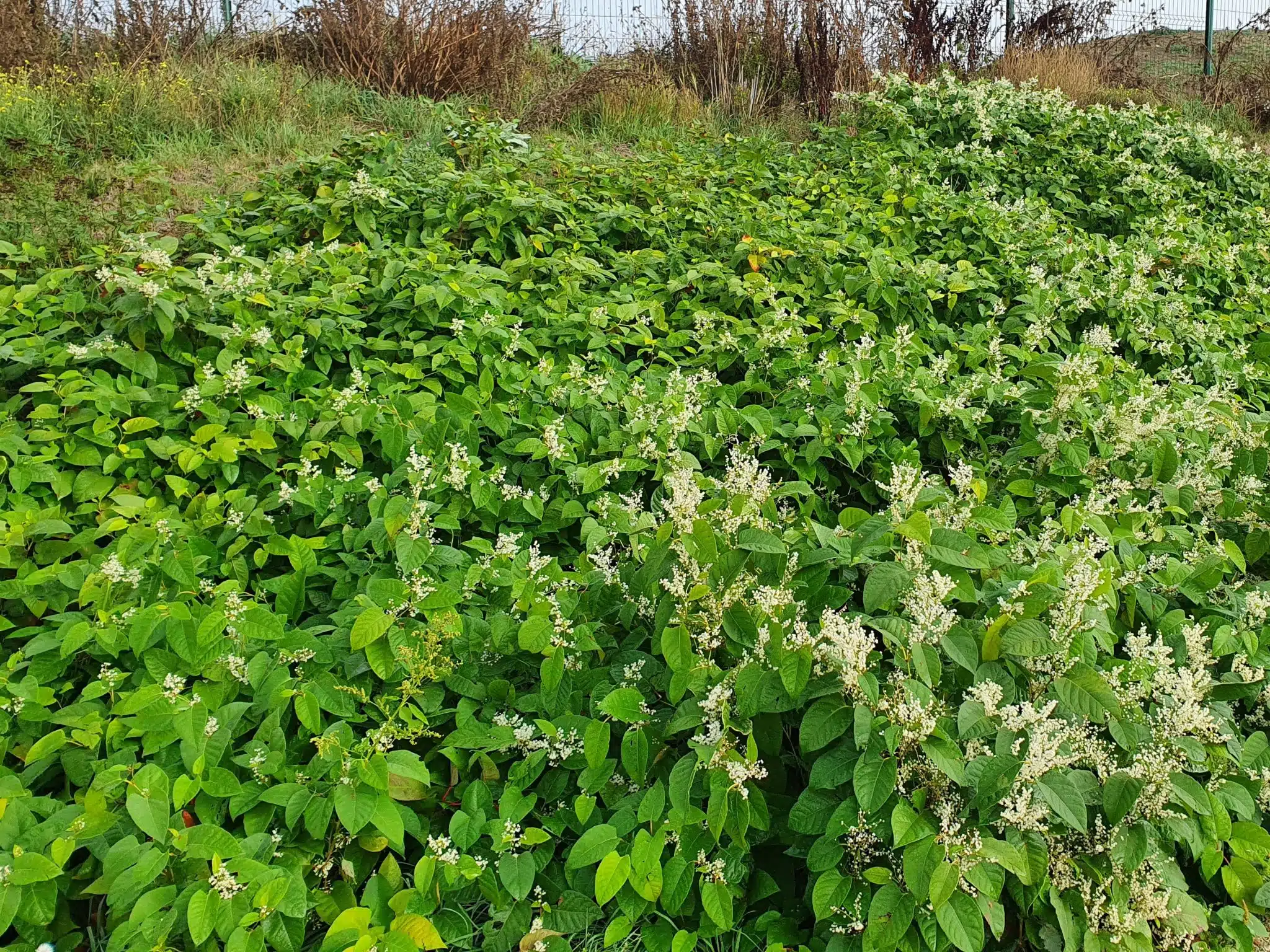
The reuse of excavated soil from the construction industry on the ECT site at Villeneuve-sous-Dammartin (77) has enabled the creation of orchards and areas conducive to biodiversity: wetlands, woodlands, edges, nesting boxes for the Little Owl and habitat for the Great Grey Hermit.
Gil Fornet / ECT
Your most frequently asked questions
Urbanization is leading to the disappearance of permeable soils and wetlands, which are essential for the diversity of ecosystems. In fact, wetlands are a complementary ecological environment to woodlands, copses, meadows and orchards. It allows a diversification of flora and fauna. The presence of water allows various species to settle and develop.
In addition, wetlands play a role in water quality, purifying water, buffering and regularly releasing stored water. It also cools the air.
The wooded edge is a key space. At the edge of the forest, it acts as a transition zone between wooded and open areas, forming an ecological corridor. The edges must be as varied as possible to provide shelter and cover for a wide range of fauna.
The orchard is a special environment. In its natural state, this type of vegetation does not exist. It’s a human creation. The planting of an orchard is conducive to the settlement of several bird species. As fruit trees age, they develop cavities that are used by various species such as chickadees, hoopoes and owls.
Some orchards also offer the opportunity to plant rare, local trees.
An invasive alien plant species is a plant that is introduced into a new environment where it is not native, and which proliferates aggressively, causing ecological, economic or social damage. These plants may have been deliberately introduced for horticulture, agriculture or other uses, or may have arrived accidentally via international trade, transport or other human activities.
Once established in their new habitat, invasive alien plant species often have a competitive advantage over native species. They can spread rapidly, crowd out native vegetation, disrupt natural ecosystems, reduce biodiversity, alter natural nutrient and water cycles, disrupt ecosystem services and even threaten endangered species.
Controlling invasive alien plant species is a major challenge for biodiversity conservation and ecosystem management in many parts of the world. Prevention, control and eradication measures are often necessary to limit their spread and minimize their harmful impact.
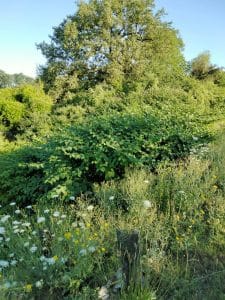
Limiting environmental impact
As part of the ISO 14001 certification, renewed in 2020, ECT, as part of a continuous improvement process, implements measures to limit the environmental impact of its activities.
All ECT sites in operation are ISO 14001 certified.
Optimized site meshing.
The sites operated by ECT are of two types to optimize the transport of inert soil.
- A network of small-scale sites capable of receiving a few hundred thousand m3 of materials from local deposits. This network, which is gradually being rolled out throughout the Ile-de-France region, helps to reduce the time spent travelling by lorry, thereby contributing to a better carbon balance by reducing the production of greenhouse gases.
- large-scale sites, such as Villeneuve-sous-Dammartin (77), capable of handling several million m3 of materials, enabling us to respond to the large truck flows required for major earthmoving projects in the Ile-de-France region
We systematically canvass the companies in charge of the work, working with them to develop solutions that limit environmental impacts. choice of host sites and access routes to depot areas, with priority given to trunk roads in order to keep nuisance to a minimum. residents.
Controlling dust and sludge production
In compliance with regulations on keeping the public highway clean and on dust dispersion, ECT undertakes, on all its development sites to keep the site and public access roads clean for the duration of the development work. Depending on the size of the worksite, a “roudiluve”, a tank for washing the wheels of heavy goods vehicles, is installed at the site exit.
In dry periods, the runways and areas being backfilled are watered if necessary. The roads leading to the site are regularly cleaned by a sweeper.
Controlling noise pollution
In compliance with article R 48-5 of the French Public Health Code on the prevention of noise pollution, ECT takes all necessary steps to organize the operation of its development sites in order to limit annoying noise emissions, and ensures the regular maintenance of its equipment.
Water protection
Given the inert nature of the materials brought in, the development project poses no risk of pollution to surface and groundwater.
If necessary, a hydraulic study is carried out to direct and regulate runoff.
Find out more about environmental and social quality indicators for ECT projects
Invasive Alien Plant Species (IAS) are one of the five causes of biodiversity loss. As a company committed to the OFB, ECT has a triple objective:
- the reduction of their proliferation on its sites
- limiting their spread from customer sites
- the creation of a dedicated offer for the management of construction site soil impacted by EVEEs
ECT has created a booklet to help you identify, learn about, combat and eradicate these species. This guide provides recommendations for each invasive plant:
- Japanese wild buckwheat
- The Butterfly Tree
- Giant Hogweed
- Galéga Officinal
- Ambrosia
- Himalayan Balsam
- The thorny apple
- The American Grape
- Herbs of the Pampa
It is important for site managers to regularly monitor the presence of EVEEs and implement appropriate control measures to limit their spread and impact. Here are the 7 best practices:
- INFORMING OUR CUSTOMERS
and transporters of the risk of inputs into the soil and dissemination on our sites. - MAPPING
impacted areas to measure their evolution. - EVALUATE
the type of intervention to be carried out depending on the plants and their location on the site. - WATCH
regularly to identify the presence of invasive plants. - DELIMIT
to avoid them on foot or with construction equipment. - COMMUNICATE
on our practices and results, with internal and external feedback. - LUTTER
Neutralize invasive exotic plant species by carefully uprooting them or burying them at the bottom of a bin.
Contain invasive exotic plant species by surrounding them with more competitive plants.
Temporarily revegetate bare soil with ground cover seedlings to render it unattractive.
